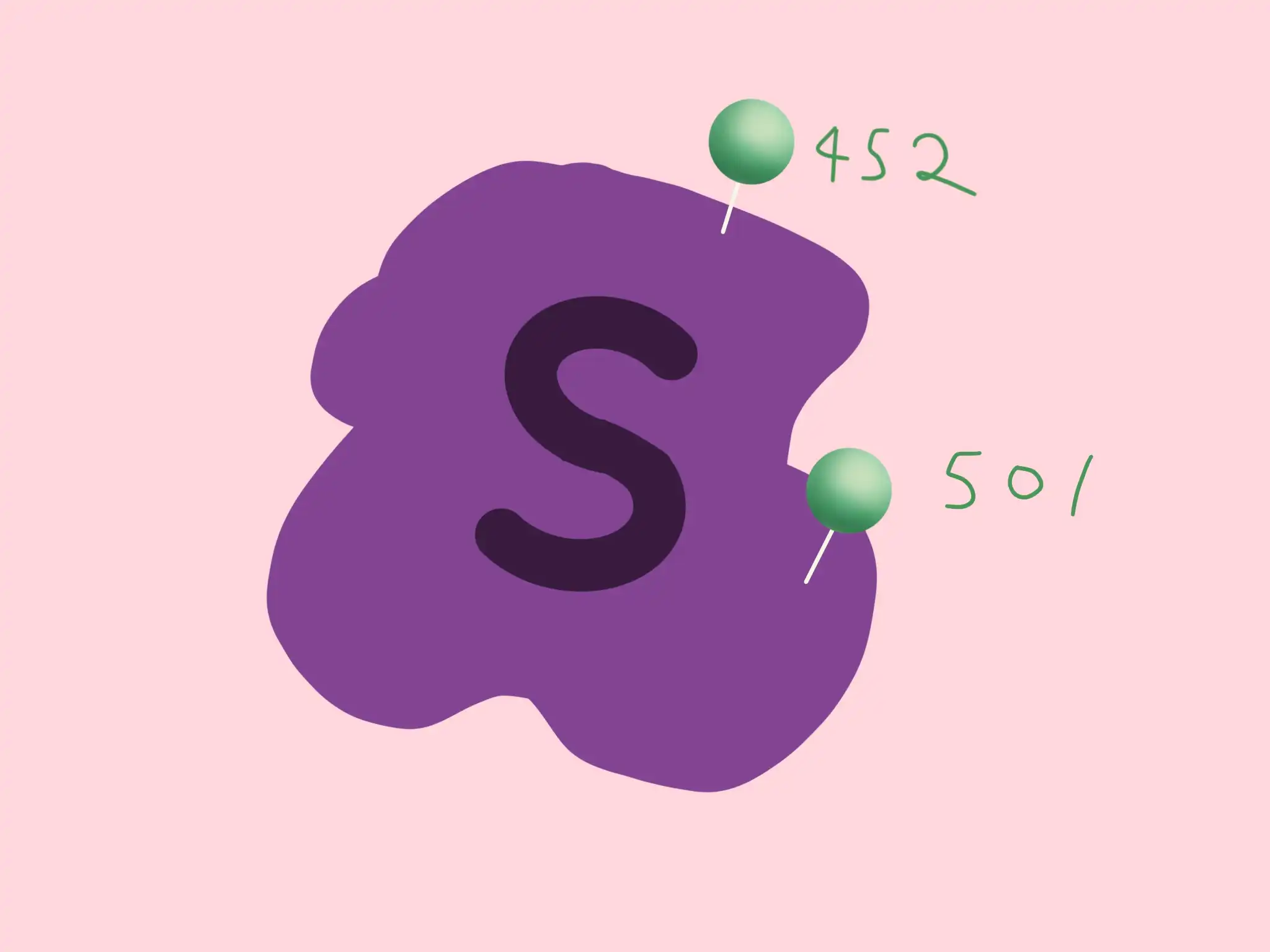Computational Chemistry Seminar: AI in Life and Study
Professor Guowei Wei hosted a computational chemistry seminar about AI application in research and shared his ideas on AI afterward on March 25.
(Cover Photo Source: Ella Zhang)
(This article is translated into Chinese below)
Guowei Wei, a Foundation Professor of the mathematics department of Michigan State University, hosted a seminar on “How AI is Revolutionizing Chemistry Research” via Zoom on March 25. This seminar attracted more than 100 attendees, which set the record in the Online Computational Chemistry Seminar Series.
The seminar introduced Artificial Intelligence applications in biochemistry research to students who have no or little knowledge of AI. Because AI is penetrating our daily life, Professor Wei said, “I think soon there should be a course in middle school and primary school for students to learn about AI like other fundamental courses such as math and Chinese because the real basic knowledge of AI and data science is very easy and comprehensible.” He believes that interdiscipline is a trend and knowing some basic AI applications helps students in every different field to have an easier study life.
In the first part of his seminar, he introduced some of the basic techniques and theories of AI in the analysis of chemistry research. The techniques focus on machine learning, a branch of artificial intelligence that can automate model building. Machine learning is categorized into supervised learning, semi-supervised learning, unsupervised learning, and self-supervised learning respectively. He then introduced regression, generation, classification, dimensionality reduction, and clustering in machine learning. Regression and classification are usually used in supervised learning, including linear regression, random forests, and the k-Nearest Neighbors Algorithm. He demonstrated the process and results of these methods, which mostly required Precalculus and Calculus materials.
Training AI develops deep neural networks, which are capable of solving different problems. Conventional neural networks model spatial correlation, and generative network complexes are designed to develop drug candidates with expected properties. With these deep neural networks, AI helps researchers with seemingly unsolvable problems. Professor Wei’s team applied AI to predict the mutations of COVID.

A cartoon virtualization of the successfully predicted mutation sites.
Photo by Ella Zhang
Professor Wei said that they “predicted prevailing SARS-CoV-2 variants to occur at residues 452 and 501” based on data collected from 2.7 million patients. To achieve this, they used machine learning models to evaluate the free energy changes in the S protein of the virus. S protein, spike glycoprotein, and binds to the cell surface are recognized by receptors on cell membranes. They generated simulations of mutations in the S protein of SARS-CoV-2 to see which mutated protein is more likely to bind with its receptor.
Professor Wei clarified the accuracy of these simulations. According to him, “All our predictions have been confirmed in the past 40 days.”
These discoveries require years of dedication in a physical lab but a much shorter time with AI, calling into question whether the future need for experimental science will decrease with AI application.
Professor Wei responded to this concern. “There's a trend that more research requires assistance from data science and specifically AI, which solves problems much faster than people when the data set is enormous. But experiments are still required to generate data for AI training. Experimental science also contributes as direct evidence of theories, so the need for experimental science is still increasing.”
However, he has different worries about AI development. “Humans can be addicted to AI in the future,” he said. He explains that AI will combine with the human brain in a few decades. Human cells receive and emit different signals that travel through the human body via the nerve system and cell signaling. AI also can form an electronic neural network, mimicking the signals of human nervous systems. AI can thus help the human body to search for cancer cells, cure diseases or change the human's appearance and shape. It is dangerous that all these potential advantages AI may provide us can cause addiction and eventually control humans without being noticed.
Professor Wei stressed that the development of AI should be under regulation and that developers must find ways to utilize AI without reaching this ultimatum. Since his discoveries and research are interdisciplinary with math and the sciences, he suggests that data science and natural sciences should both contribute to research mutually.
It is necessary not just for scholars, but for every person to understand fields different from their own specialty. As NYU Shanghai students, there are many opportunities to select interdisciplinary courses and majors. The community should seize this opportunity to understand these new technologies and merge AI with our study and life.
(Chinese Translation)
3月25日,魏国伟教授主持了一场关于人工智能在科研中的应用的计算化学研讨会,并分享了他对人工智能的看法。
3月25日,美国密歇根州立大学数学系基金会教授魏国伟通过Zoom主持了一场题为“人工智能如何革新化学研究”的研讨会。这次研讨会吸引了超过100人参加,创下了《计算化学》系列网络研讨会的纪录。
研讨会向对人工智能知之甚少的学生介绍了人工智能在生物化学研究中的应用。因为人工智能遍布于我们的日常生活,魏教授在采访中说:“中学和小学应该开设人工智能基础课程,就像数学和语文那样的课。人工智能和数据科学的基本知识是非常简单和易于理解的,小学生也能接受。”他提出跨学科是一种趋势,了解一些基本的人工智能应用可以帮助不同领域的学生在学习和生活中更轻松。
在他的研讨会的第一部分,他介绍了人工智能在分析化学研究中的一些基本技术和理论。这些技术聚焦于机器学习,这是人工智能的一个分支,可以自动构建模型。机器学习分为监督式学习、半监督式学习、无监督式学习和自我监督式学习。然后,他又简单介绍了机器学习中的方法——回归、生成??、分类、降维和聚类。回归和分类通常用于监督式学习,包括线性回归、随机森林和k-Nearest Neighbors。他展示了这些方法的过程和效果,这些方法至少涉及到微积分知识。
训练AI开发深度神经网络,能够解决不同的问题。传统神经网络能模拟空间相关性,生成网络复合体用于开发具有预期特性的候选药物等等。有了这些深度神经网络,人工智能可以帮助研究人员解决看似无法解决的问题。魏教授研究组利用人工智能技术预测了新冠病毒的突变。
魏教授说,根据从270万名患者收集的数据,他们“预测了流行的SARS-CoV-2突变出现在S蛋白452和501残基上”。为了实现这一目标,他们使用机器学习模型来评估病毒S蛋白的自由能变化。S蛋白、刺突糖蛋白和与细胞表面的结合被细胞膜上的受体识别。他们模拟了SARS-CoV-2的S蛋白突变,以观察哪一种突变蛋白更有可能与其受体结合。魏教授团队证实了这些模拟的准确性。他说:“我们的预测都在过去40天里得到了证实。”
若想在实验室里通过湿实验得出以上结果,不知需要多少年,但用人工智能整理数据并预测所需的时间很短,这引发了一个问题:未来对湿实验的需求是否会随着人工智能的应用而减少?
魏教授回应了这种担忧:“现在科研的趋势是更多的研究需要数据科学的帮助,特别是人工智能,当数据集庞大时,人工智能解决问题的速度要比人类快得多。但人工智能训练仍然需要实验来生成数据。湿实验也可以作为证明推论的直接证据,所以对实验科学的需求仍在增加。”
然而,他对人工智能的发展有不同的担忧。“未来人类可能会对人工智能上瘾。”他解释说,人工智能将在几十年内与人类大脑结合。人体细胞通过神经系统和细胞信号接收和发出不同的信号,这些信号在人体中传播。人工智能还可以形成一个电子神经网络,模仿人类神经电信号。因此,人工智能可以帮助人体寻找癌细胞,治疗疾病或改变人类的外观和形状。人工智能提供给人类的所有这些潜在优势都可能导致上瘾,并最终在不被注意的情况下控制人类,这无疑是危险的。
魏教授强调,人工智能的发展应该受到监管,开发者必须找到利用人工智能的方法。由于他的发现和研究是与数学和科学交叉的,他建议数据科学和自然科学应该相互促进研究,无论专业方向是什么,都应该广泛学习。
不仅是学者,每个人都有必要了解与自己专业不同的领域。上海纽约大学的学生有很多机会选择跨学科的课程和专业,他们应该抓住这个机会,了解这些新技术,并将人工智能与我们的学习和生活结合起来。